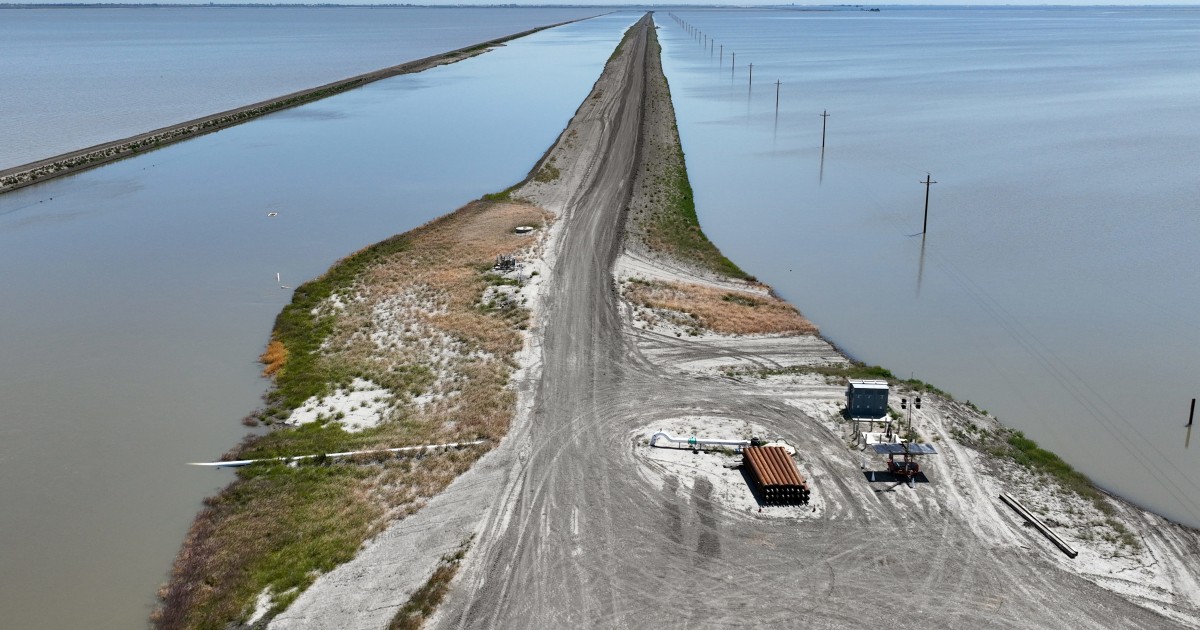As California braces for another powerful atmospheric river storm on Sunday, Tulare Lake continues to remind visitors of the powerful consequences these extreme storms can have.
Floodwaters in the lake, which formed after about a dozen atmospheric river storms hit California in 2023, are still stretching across thousands of acres of premier farmland more than nine months after the resurrection of the “ghost lake,” as some took to calling it.
This summer, the lake’s stagnant waters became a hotspot for wild birds and caused an outbreak of avian botulism that forced wildlife officials to patrol on airboats daily and collect hundreds of dead birds. Flooded vehicles and telecommunications equipment were submerged along the bottom of the lake bed, and farm operators couldn’t access their fields.
The lake’s continued presence in this corner of the Central Valley highlights how the environmental impacts of last year’s extreme rainfall are still reverberating across California. Storms this weekend could bring extreme precipitation to other parts of the state, but most flood impacts aren’t expected to linger as long.
Today, the Tulare Lake is shrinking rapidly, even amid recent rainfall. As of Thursday, water covered about 4,532 acres of farmland, according to Justin Caporusso, who handles public relations for Kings County, where the floodwaters settled. That means the lake is less than 1/20 of its peak size last year, and life is approaching normal for those living nearby.
Sgt. Nate Ferrier, of the Kings County Sheriff’s Department, who visited the lake in late January, said most of it has been cleaned up.
“The farming community was already back to life,” he said. “There were tractors everywhere.”
More than a century ago, the lake was a natural feature of the southern San Joaquin Valley before settlers dug irrigation ditches to reroute water and drain the landscape for farming. Last year, floodwaters filled the Tulare Basin because reservoirs could not handle intense snowmelt runoff from the Sierra Nevada after a series of storms.
This week’s atmospheric river storms — which are to be punctuated by a significant storm Sunday — are unlikely to have much impact on the Tulare Lake, Caporusso said in an email. Reservoirs upstream of the lake have the capacity to handle the precipitation, and the California Department of Water Resources found that the southern Sierra has about 45% as much snow as it normally does this time of year.
